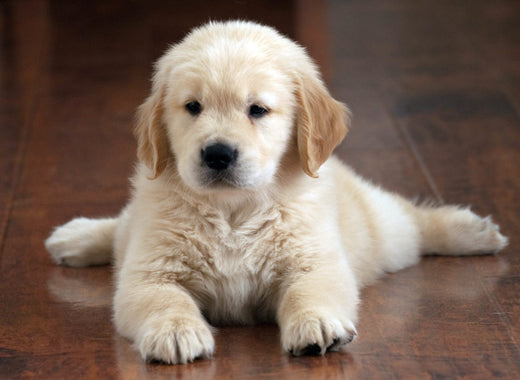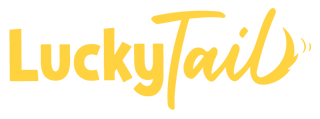
When to Start Grooming a Puppy
The question “When should puppies get their first haircut?” is often a head scratcher for many new dog parents. Start too early and their fur might never grow properly in adulthood, but start too late and it will be a challenge to train your dog to get used to the process. Moreover, puppy haircuts are only half of the equation. You also need to know when to start brushing puppy fur and when to cut puppies' nails for the first time. So, when is the right time to start grooming your puppy? And what can you do at home before taking your pup to a professional groomer? Brushing and nail trimming can begin as soon as you bring your puppy home. However, your puppy's first haircut shouldn’t be until they reach 6 months old. It takes most breeds this long for their full adult coat to develop. Only then is it advisable to trim it and keep it tidy.Preparing a Puppy for Grooming
Your puppy’s first grooming session is an exciting time! However, puppies remember their first experience of grooming extremely well, so good or bad it will stay with them for life. Ensuring they have a good first experience is vital if you want to avoid issues later on in adulthood. Here are our top tips for puppy grooming preparation. Follow these steps and your puppy’s first grooming experience should be memorable – for the right reasons!1. Start grooming young
We’ve already answered the question “When can you groom a puppy?” but it is worth mentioning again. Engaging in grooming from a young age is arguably the most important tip to take from this article – it will save you a lot of hassle later on. Having taken your puppy home, make sure you brush your pup regularly and trim their nails. You can also bathe your puppy and use a blow dryer on their fur from 8+ weeks. When they eventually go for their first haircut at around 6 months of age, they’ll already be acclimatized to being handled by people and know partly what puppy grooming entails.2. Tire the puppy out with playtime
Another top tip is to tire your puppy out with playtime before attempting to groom it. Puppies have a lot of energy, so initiating a play session should come easily. The more exhausted your dog is, the less of a fight they will put up when it comes to grooming. They will be more likely to surrender and let you brush, wash, and style them.3. Take things slow
Even with these first two tips, properly acclimatizing to grooming can take your dog some time. Be patient and ensure your pup isn’t pushed too far too soon. This will only have a negative impact on the experience. Ask your professional puppy groomer to go slowly too and keep an eye on your dog's reaction so you know if they’re going too far.4. Reward with treats
Using treats is a great way to help puppies form positive associations with going to the groomers. You want to reward them each step of the way – offer them a treat in the car, another at the puppy spa, and one after the grooming session. Before long, your pup will be begging to go to the groomers and get more treats! One thing to watch for though is rewarding whining and crying. Never use treats to make your puppy quiet as you’re simply rewarding their bad behavior. Only give treats once your dog is calm, content, and relaxed.Puppy Grooming Procedures
You need to know how to groom a puppy the right way. This can make the experience much more enjoyable for your pup and they’ll be more accepting of it. Below we look at each of the different stages of grooming and how to do each one correctly.1. Washing and bathing
Washing and bathing are important to remove stubborn dirt and nasty smells. However, this shouldn’t be done too often – experts recommend bathing your pup every four to six weeks. Here's a quick look at how to wash your dog:- Place your puppy on a table so they know this isn’t playtime
- Gently brush your puppy to help it relax and calm down
- While brushing, turn on the blow dryer so they become accustomed to the noise
- Place your puppy in a bath or even a sink if you have a smaller breed
- Use the showerhead or a jug to soak your puppy in water
- Use a sponge to spread puppy shampoo over the fur – some need to be diluted before using
- Scrub the shampoo into the fur and rinse with clean water
- Take your puppy out of the bath and immediately cover it with a towel
- Put your pup on the table and dry with the blow dryer. Start from the tail and move forwards.
- Once fully dry, brush your puppy and give them a treat for being a good boy!
2. Haircuts and brushing
Brushing is essential for moving any mats or tangles in your puppy’s coat. You can brush your pup as soon as you bring it home. Make sure you always brush in the direction of the hair growth and don’t use too much pressure. You should be waiting 6 months for the first puppy haircut. You can take your dog to a pet grooming spa for a professional trim. Alternatively, you can use clippers on your puppy working down in the direction of the hair growth. Be careful in areas that are extremely tangled. Once happy with the overall trim, you can go in with scissors to tidy around the face.3. Trimming nails
Knowing how to cut a puppy’s nails is another essential skill for proper puppy grooming. Nails that get too long can grow into paw pads and cause your puppy discomfort. To cut their nails, follow these steps:- Hold your puppy’s paw gently but firmly in your hand
- Trim their claws one at a time using a clipper
- Make sure you only cut the very end before the nail starts to curve
- Finish with a file to smooth the edges
- Reward your puppy for staying relaxed and calm
Instead of clipping and filing, you can alternatively use a dog nail grinder. This often gives a smoother finish and you might find you have more control, ensuring you don’t cut the quick.
